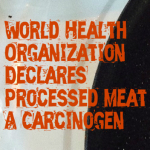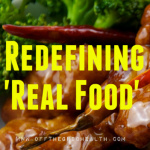It's all about the Benjamins baby.
Scam: Measuring Weight vs. Calories

By now we shouldn’t be surprised that the fast food and processed food industry is misleading the public. But when you hear this marketing tactic, it might just cook your grits.
To this day, now in your supermarket, products are marketed to consumers by featuring the percentage of a particular ingredient based on its weight and not on its calorie content. So what is wrong with that? The physiological response of the human body is not based on the weight of a nutrient but it is based on the proportion of the nutrients (e.g., fat, protein, and carbohydrates) in the food we eat over time. Any serious trainer or nutritionist will tell you it that the caloric percentage of these (macro-)nutrients is key to your health.
Here is an example of the sucker punch. Using marketing math, milk producers sell ’2% milk.’ It is technically true that 2% milk is 2% fat by weight. It is over 90% water by weight. So they the food industry is not lying to you. However, 2% milk is 35% animal fat by calories. Whole milk is 49% animal fat by calories.

Using this slick marketing logic, a large McDonald’s French Fries can be marketed as “90% fat free”. Reality: McDonald’s french fries are 45% fat by calories. “I’m loving it.” It’s like saying a Hummer is fuel efficient because it has a big gas tank.
The misinformation from food manufacturers sabotages any attempt to manage one’s weight and account for macronutrient (fat, carbs, protein) intake. This type of marketing makes it impossible for the average consumer to determine what food is healthy for them.
TIP: Until the FDA requires more informative labels, make it a practice to carefully read all nutrition and ingredient labels on the food you purchase so you can make better decisions. Note the percent of fat, carbs, and protein with respect to total calories in a serving as a start.
Off The Grid Health Recommends:
- Avoiding / minimizing animal fat.†
- Minimizing / eliminating unfermented dairy products.
- Choosing organic plant-based fats (nuts, seeds, beans).
† Why? Many production chemicals, antibiotics, and pesticides are lipophillic, meaning they dissolve in fat. These lipophillic toxins are known to be endocrine disruptors and are a contributing cause to a number of popular western diseases. Lipophillic toxins consumed by the animal will settle in its fat. When we ingest the fat of a contaminated animal, we accumulate those toxins in our bodies. We believe, ‘God made food good. Man Screwed Up Production.’





 D5 Creation
D5 Creation